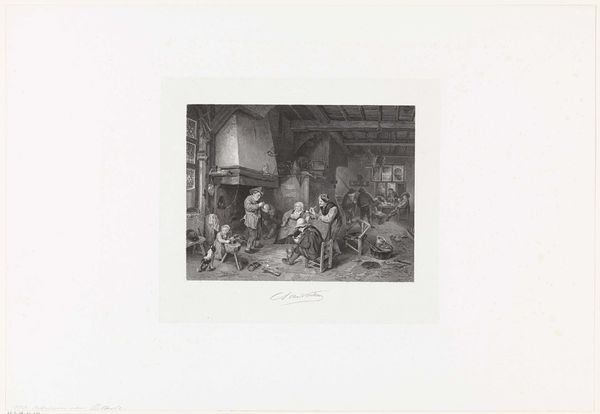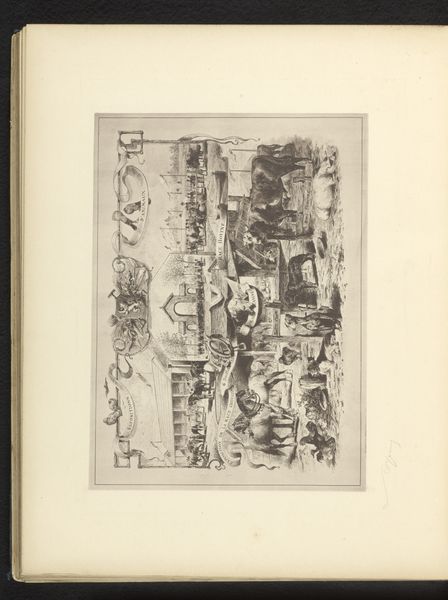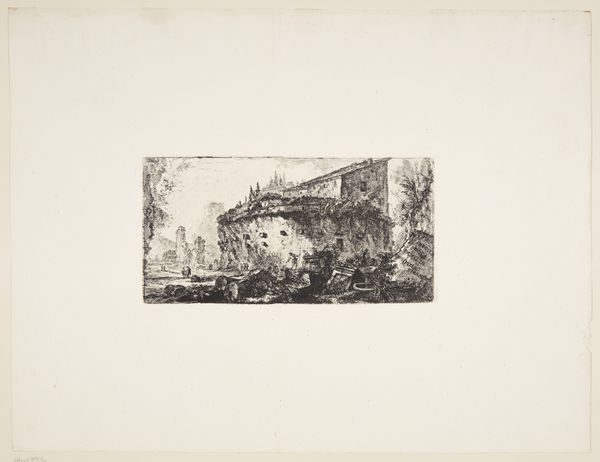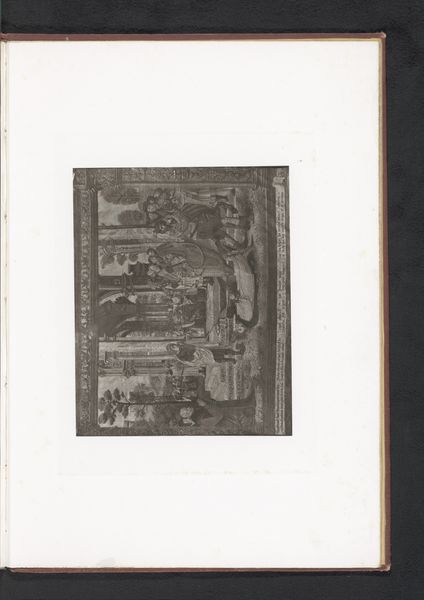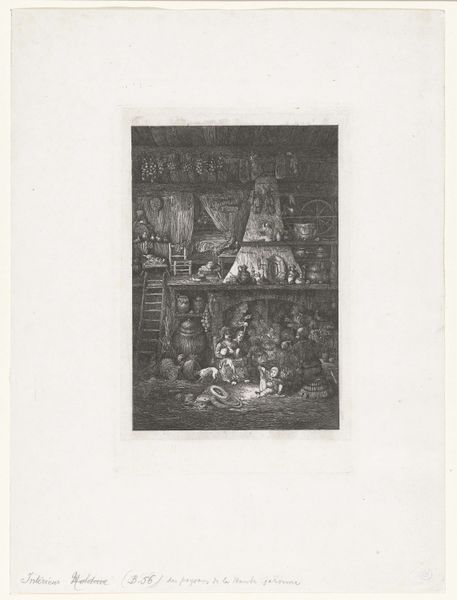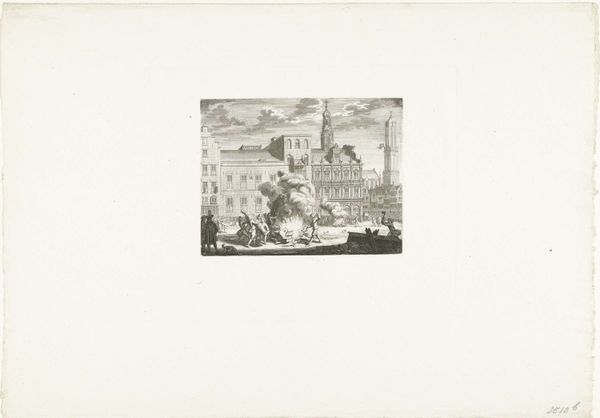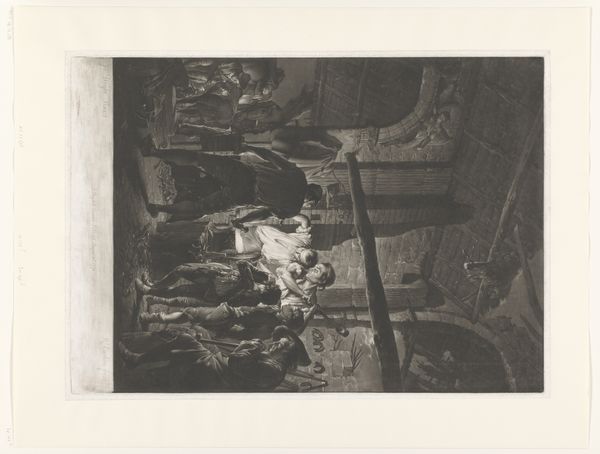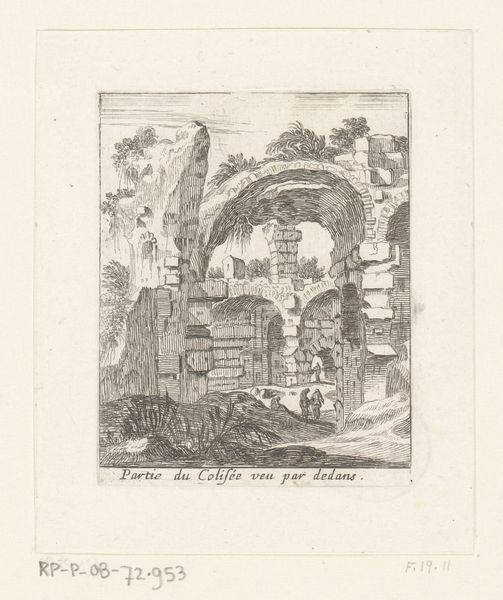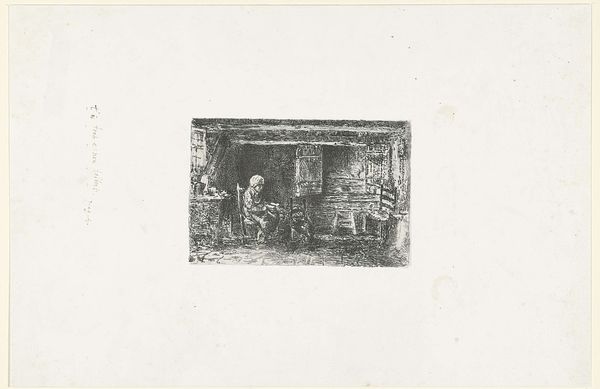
Plaster Unloaders, plate three from Le Long de la Seine et des Boulevards Possibly 1890 - 1910
0:00
0:00
Dimensions: 78 × 112 mm (image); 148 × 230 mm (sheet)
Copyright: Public Domain
Curator: Auguste-Louis Lepère's etching, "Plaster Unloaders, plate three from Le Long de la Seine et des Boulevards," possibly created between 1890 and 1910, presents a fascinating look at Parisian life. The artwork resides here at The Art Institute of Chicago. Editor: The density of the lines! It's creating such a gloomy and heavy mood. And it looks like manual labor, probably backbreaking, in an urban setting. It feels very…real. Curator: Indeed. Lepère masterfully employs line and contrast. Observe how he constructs depth using varied densities of cross-hatching. The structural rigidity of the architectural backdrop—those imposing buildings—provides a stark counterpoint to the organic, almost chaotic, arrangement of the laborers. Editor: Right, the materials the workers are carrying also stand out. You can tell they are bags of heavy material, not only by their size, but the way the figures hunch and strain under the weight. I’m curious about plaster, specifically; how the availability of these resources affected construction practices at the time. Curator: Excellent point. And also, notice the framing. Lepère’s self-contained composition utilizes almost theatrical staging: two workers occupy the edges like statuesque pillars while other figures form a frieze-like display of bodies that draw your eye to a kind of shallow relief in the cityscape that hints to the city. Editor: Thinking about materials again... plaster became so ubiquitous because it's affordable. This is a scene about the labor that enabled a certain kind of progress and expansion; we get to see a world powered by bodies straining, stooping, carrying, repeating. The engraving lets us witness the energy involved in the physical act. Curator: Perhaps it’s Lepère’s subtle commentary on the romanticization of Parisian progress during that time, a tension between aesthetic appreciation and ethical awareness. Editor: It pushes back on ideas of romantic cityscapes, to look deeper than that picture-postcard surface to recognize a narrative that includes workers who provide an invisible foundation. Curator: The engraving's formal composition underscores that invisible support. Editor: It encourages us to consider material and action in that specific time and location. Thank you.
Comments
No comments
Be the first to comment and join the conversation on the ultimate creative platform.
